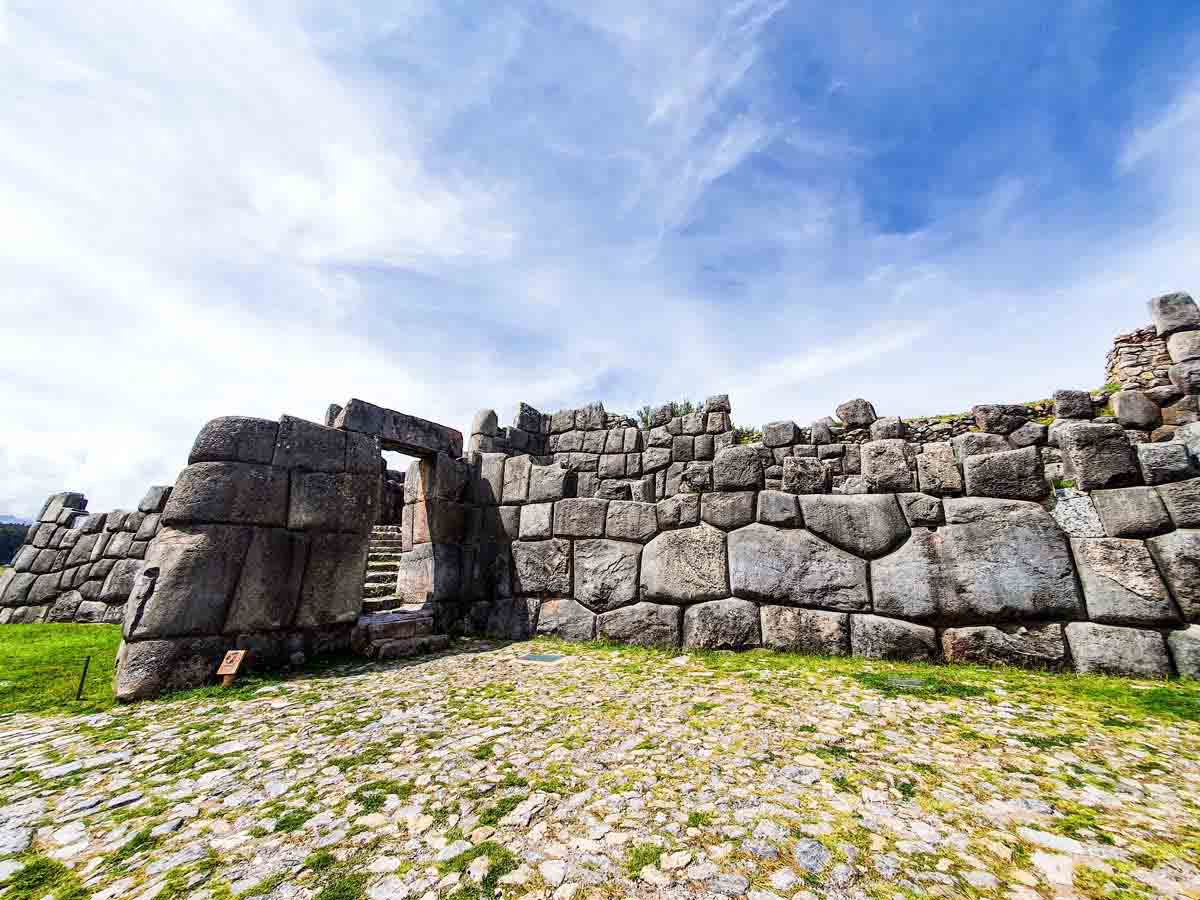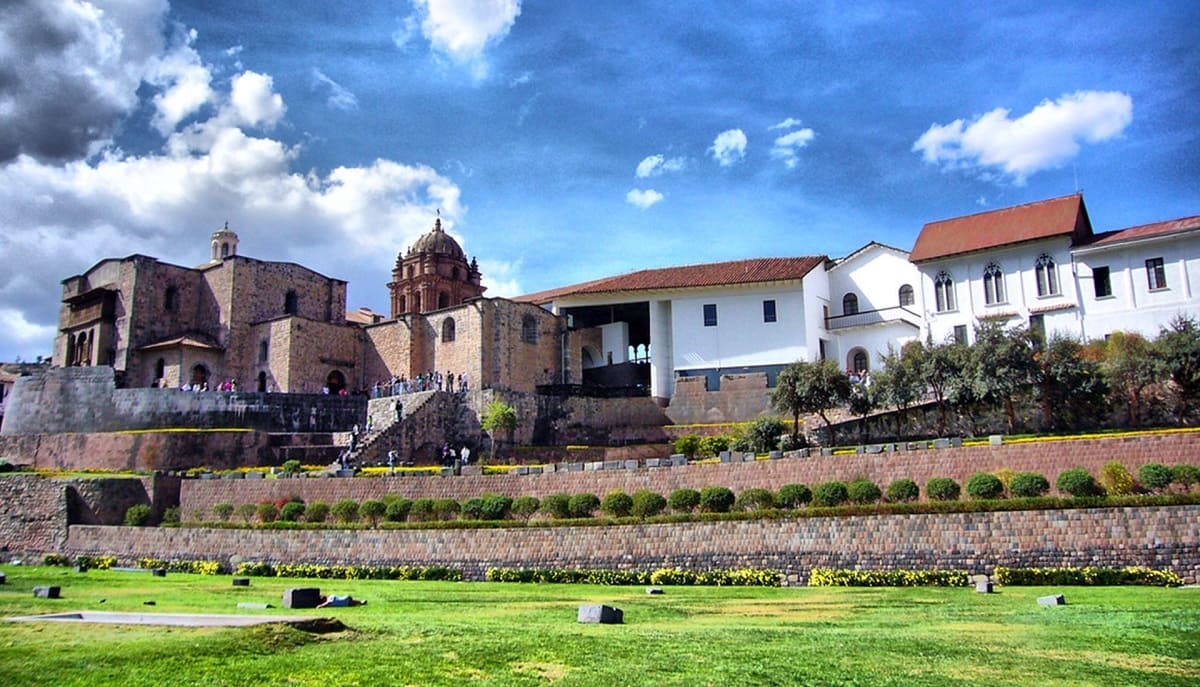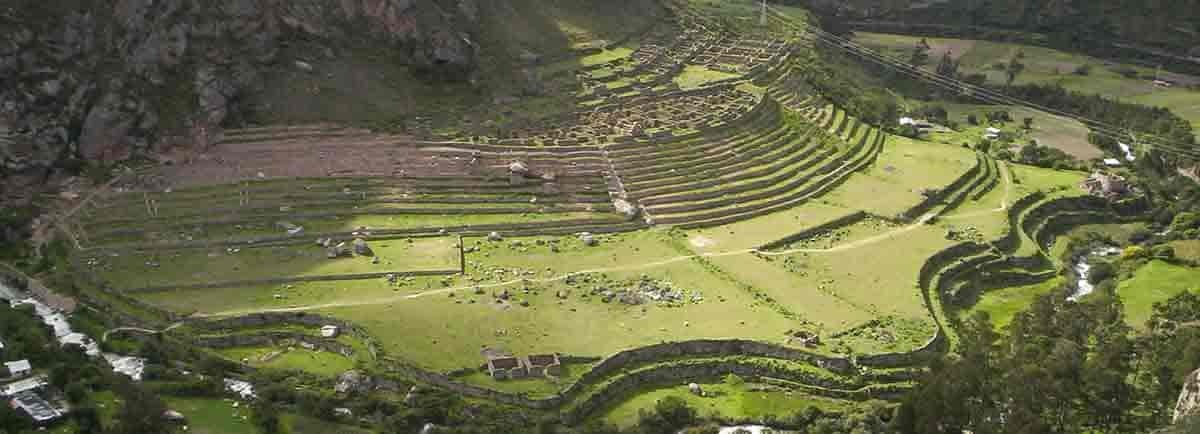
From the oldest civilization in America, to the largest and most powerful empire of the southern continent, Ancient Peru conserves the architectural and artistic vestiges of fascinating cultures. Discovering them is a breathtaking experience.
Machu Picchu is an Inca city surrounded by temples, platforms and water channels, built on top of a mountain. Its construction was built with large blocks of stone joined together, without the use of amalgam. At the moment it is considered cultural patrimony of the humanity when being recognized like an important political center, religious and administrative of the Incas time.
Built-in the fifteenth century, possibly at the request of the Inca Pachacuteq, Machu Picchu is divided into two large sectors: the agricultural comprising a vast network of terraces and artificial terraces and the urban, consisting of various buildings and plazas including the Temple of the Sun, Temple of the Three Windows, the Main Temple and the Temple of the Condor.
The less courageous or the more hurried can do tourism in Machu Picchu from Cuzco by train or bus. Some, like us, think that you can only fully appreciate Machu Picchu following in the footsteps of the Incas who took that same path 5 centuries ago. However, the pleasure is not limited to getting there, because throughout the whole trip, it is the history of Peru and the Incas that reappears, little by little, as the kilometers advance. That is the way to discover ancient citadels.
The Machu Picchu trail is considered one of the most spectacular trekking routes on the planet and is the best-known of the Inca trails.
Located on the top of a mountain at 3,000 meters high, Kuelap offers a panoramic view that combines clouds with the green landscape of the Amazon rainforest of Peru. It is three times older than Machu Picchu, so experts have determined that it belongs to a pre-Inca sector of the sector. Kuelap expands by six hectares that include 400 round houses and a defensive wall of 20 meters of height of 1.5km in length. Many of the buildings are still covered by the density of the forest, but that only adds to its charm.
A town of palaces, temples and fortresses that are now World Heritage, the Sacred Valley Peru was for the Inca Empire an extension of its capital, Cusco. Inside the valley are the remains of Moray, a gigantic set of terraces that served as an agricultural laboratory for the Incas. It is believed that the form allowed them to create different microclimates that would later be interpreted as crops at different heights. An incredible human feat that deserves to be visited.
Sacsahuamán is one of the most mysterious places of ancient ruins in Peru, because nobody knows what was used this huge complex of buildings with its zig-zag in the form of walled fortifications. Rising far above the city of Cusco, the site may have been a royal house, a fortress or a mixture of the two, but archaeologists are still debating this. Each of the huge blocks of stone used to build walled fortifications of the site weighs approx. 300 tons each - how are they cut with such precision and how were they transported to this challenging site?
 Sacsayhuaman Fortress
Sacsayhuaman Fortress
About an hour's drive northeast of Cusco lies the archaeological site of Pisac. This spectacular site overlooking the Urubamba Peru River, is arranged as a number of curved concentric terraces, which generations of farmers in Peru use to cultivate. In addition, the complex contains several religious monuments that recall the style and architecture of the temples of Machu Picchu. Did these former farmers already practice crop rotation based on a lunar calendar? Several stones carved on the site suggest that Peruvian farmers used to track the astrological constellations.
The sacred city of Cusco was considered the center of the known world. Four main roads spread in all directions, allowing Cusco citizens to reach the four corners of the Inca Empire. Although the Spanish Conquistadores most devastated this site, the ancient city walls still stand, as does the magnificent sun temple of Koricancha, which legend has it was once covered all in gold leaves, but was stripped of its riches, when the Spaniards invaded the empire.

Called as the Secret Inca City, Choquequirao is one of the alternatives if you could not get your Machu Picchu entrance, and one of the most recommended by adventurers, because to reach it is necessary a trek of at least 4 days on one of the deepest canyons in America. Located at 3 thousand meters high, the city of Choquequirao receives on average 30 travelers a day compared to 5 thousand Machu Picchu. The ruins are still in discovery, with only 40% of their magnitude exposed. Its size is such that it is estimated to be 4 times larger than Machu Picchu.
It is known as the Inca Living City, and one of the most wonderful aspects of Ollantaytambo is how the ancient ruins blend with the contemporary and quiet life of its inhabitants (many of the Inca canals are still used to this day). This is one of the best places to admire how the Incas carved the stone with a mastery difficult to understand with the technology they had. Your Ollantaytambo tour must include the "Temple of the Sun", which is located at the highest point of the place, offering unique views of the Andes.
The Inca empire encompassed not only the current Peruvian territory, but also parts of Colombia, Ecuador, Bolivia and Chile. Located on the highest navigable lake in the world, Isla del Sol is the favorite destination for those who visit Titicaca. Life on this Bolivian island is quiet, because there is no noise and there are no motorized vehicles. A true paradise where ancient ruins are interspersed with turquoise beaches, where relaxation goes hand in hand with a trip to the territory of our ancestors.
Cachicata or Cantera Inca is one of the ancient quarries used by the pre Inca and Inca civilizations to build the vast complexes of Ollantaytambo. It was a source of large amounts of pink granite. The Cachicata quarries are 14 km from Ollantaytambo. The view of Ollantaytambo from the quarries is spectacular and during the walk you can see many large stones that were left in the middle of their long journey to the town. It was also a commercial route for the Incas. Cachicata is a small and remote town that can benefit from the occasional visit of tourists.
The Inca Quarry trail is a great alternative to the famous Inca Trail hike. This road was built by the Incas and used for hundreds of years to access local communities and transport goods. This trail is not as well known as the Classic Inca Trail, so many fewer crowds and a more serene trekking experience are expected in Peru.
Patallacta Inca Trail is an Inca town, located at 2,840 m. / 8,136 ft. at the confluence of the Cusichaca, Urubamba rivers in the mountain called Patallaqta, province of Urubamba, department of Cusco.
These are constructions with several well-defined sectors, enclosures, platforms, plazas, stairways, canals, etc. Highlight, especially the agricultural terraces and their drainage system. This archaeological site should not be confused with another place of the same name, located west of Machu Picchu, which can be visited on the trek to Salkantay, which was a ceremonial center.
Patallacta Inca Trail was an eminently agricultural town, it was probably the place where the products of the Valley were concentrated. It has constructions separated from the platforms that could be barns.

Waqrapukara is so unknown that we still do not know if it was a fortress, a sanctuary or an astronomical observatory. This monument is located at 4,300 meters above sea level in the Apurimac Canyon, south of the city of Cusco. Its landscape is breathtaking, because it is surrounded by impressive platforms, squares and a giant monolith that overlooks the mountain landscape. Unlike other destinations with a multitude of visitors, in Waqrapukara you can camp in the surroundings, an extraordinary opportunity to enjoy the night sky in this magical place.
